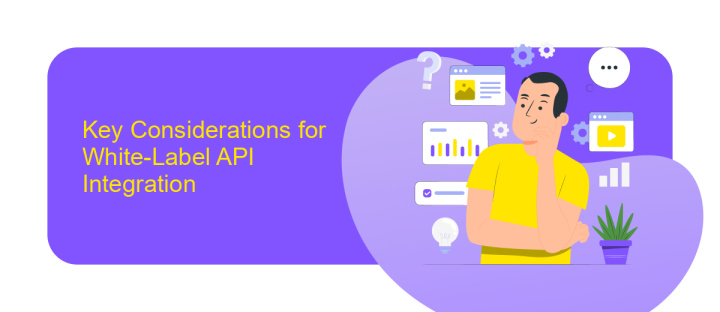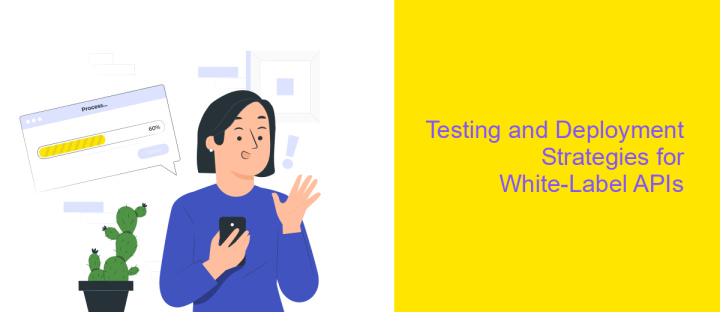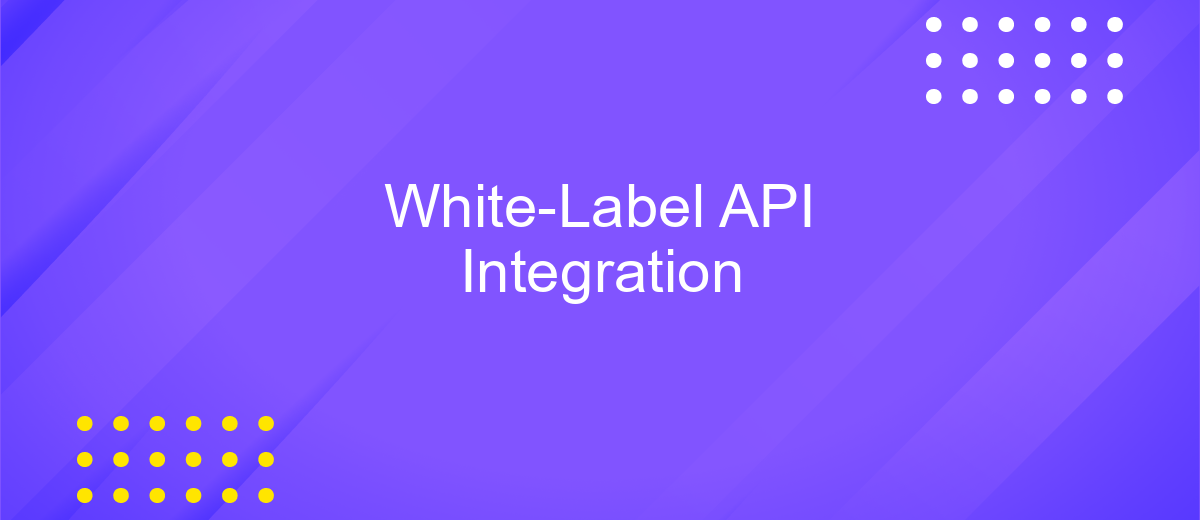White-Label API Integration
In today's rapidly evolving digital landscape, businesses are increasingly turning to white-label API integration to enhance their offerings and streamline operations. This approach allows companies to leverage existing technologies under their own brand, providing a seamless user experience while reducing development time and costs. By integrating white-label APIs, businesses can focus on their core competencies and deliver tailored solutions that meet the ever-changing demands of their customers.
Understanding White-Label APIs and Their Benefits
White-label APIs are a powerful tool that allow businesses to offer services or products under their own brand, without having to develop the underlying technology themselves. By leveraging white-label APIs, companies can quickly integrate third-party solutions into their platforms, saving time and resources. This approach not only streamlines operations but also enhances the brand's value proposition by providing a seamless user experience.
- Cost Efficiency: Reduces development and maintenance costs.
- Speed to Market: Accelerates the launch of new features.
- Customization: Allows for branding and feature adjustments.
- Scalability: Supports business growth without additional infrastructure.
- Expertise: Leverages the expertise of specialized API providers.
Incorporating white-label APIs into a business strategy can be transformative. It enables companies to focus on their core competencies while still offering a comprehensive suite of services. By doing so, businesses can remain competitive in a fast-paced market, ensuring they meet customer demands efficiently. This strategic move not only drives innovation but also fosters long-term growth and customer satisfaction.
Key Considerations for White-Label API Integration

When considering white-label API integration, one of the primary factors is ensuring compatibility between the API and the existing systems. It's crucial to evaluate the technical specifications and requirements, such as data formats, authentication methods, and rate limits, to ensure seamless integration. Additionally, understanding the API documentation thoroughly can prevent potential issues and streamline the development process. Another key aspect is assessing the scalability of the API to accommodate future growth and increased demand.
Security is another critical consideration in white-label API integration. Implementing robust security measures, such as encryption and secure access protocols, is essential to protect sensitive data. Furthermore, selecting a reliable integration platform like ApiX-Drive can simplify the process by offering user-friendly tools and automation capabilities. ApiX-Drive provides a versatile solution that supports numerous applications, reducing the complexity of managing multiple integrations. Lastly, ongoing support and maintenance are vital to address any technical challenges and ensure the API continues to function optimally over time.
Technical Implementation and Best Practices

Implementing a White-Label API requires careful planning and execution to ensure seamless integration and optimal performance. Start by thoroughly understanding the API documentation provided by the service provider. This will help you identify the necessary endpoints, authentication methods, and data formats required for successful communication between your application and the API.
- Set up a development environment to test API calls without affecting the live system.
- Implement error handling to manage unexpected responses and ensure system stability.
- Use secure authentication methods such as OAuth 2.0 to protect sensitive data.
- Optimize API requests by using caching strategies to reduce latency and improve performance.
- Regularly monitor API usage and performance to identify and address potential issues promptly.
Following these best practices will not only enhance the reliability and efficiency of your White-Label API integration but also ensure a smooth user experience. Continuous monitoring and optimization will help you adapt to any changes in the API or business requirements, maintaining the integrity and functionality of your application.
Testing and Deployment Strategies for White-Label APIs

Testing and deploying White-Label APIs require meticulous planning to ensure seamless integration and functionality across different platforms. Initially, a comprehensive testing phase should be conducted to identify potential issues. This involves unit testing, integration testing, and end-to-end testing to verify that all components work harmoniously.
After thorough testing, deployment strategies must be carefully crafted. This includes selecting the right deployment environment and ensuring that the API is scalable to handle varying loads. Continuous monitoring should be implemented to detect and resolve any issues swiftly.
- Establish a robust CI/CD pipeline for automated testing and deployment.
- Utilize sandbox environments for safe testing before live deployment.
- Implement version control to manage updates and rollbacks efficiently.
- Ensure security measures are in place to protect data and maintain compliance.
Once deployed, regular maintenance and updates are crucial to keep the API running smoothly. This includes monitoring performance metrics and user feedback to make necessary improvements. By following these strategies, businesses can ensure their White-Label API solutions remain reliable and effective.
Ongoing Maintenance and Support for Seamless Integration
Ensuring a seamless integration of a White-Label API requires ongoing maintenance and support to address evolving needs and potential challenges. Regular updates and monitoring are crucial to maintain optimal performance and security. This involves tracking API performance metrics, identifying bottlenecks, and resolving issues promptly. Additionally, staying informed about the latest API documentation and updates is essential to ensure compatibility and leverage new features. By proactively managing these aspects, businesses can minimize downtime and enhance user experience.
Utilizing integration platforms like ApiX-Drive can significantly streamline the maintenance process. ApiX-Drive offers automated workflows and real-time data synchronization, reducing manual intervention and the risk of errors. Its user-friendly interface allows for easy configuration and monitoring of API connections, ensuring that integrations remain robust and efficient. Moreover, ApiX-Drive provides comprehensive support, assisting businesses in troubleshooting and optimizing their API integrations. By leveraging such services, companies can focus on their core operations while ensuring their integrations operate smoothly and effectively.
FAQ
What is a White-Label API Integration?
How do I choose the right White-Label API Integration provider?
What are the benefits of using a White-Label API Integration?
How can I ensure a smooth integration process?
What kind of support can I expect during the integration process?
Apix-Drive will help optimize business processes, save you from a lot of routine tasks and unnecessary costs for automation, attracting additional specialists. Try setting up a free test connection with ApiX-Drive and see for yourself. Now you have to think about where to invest the freed time and money!

